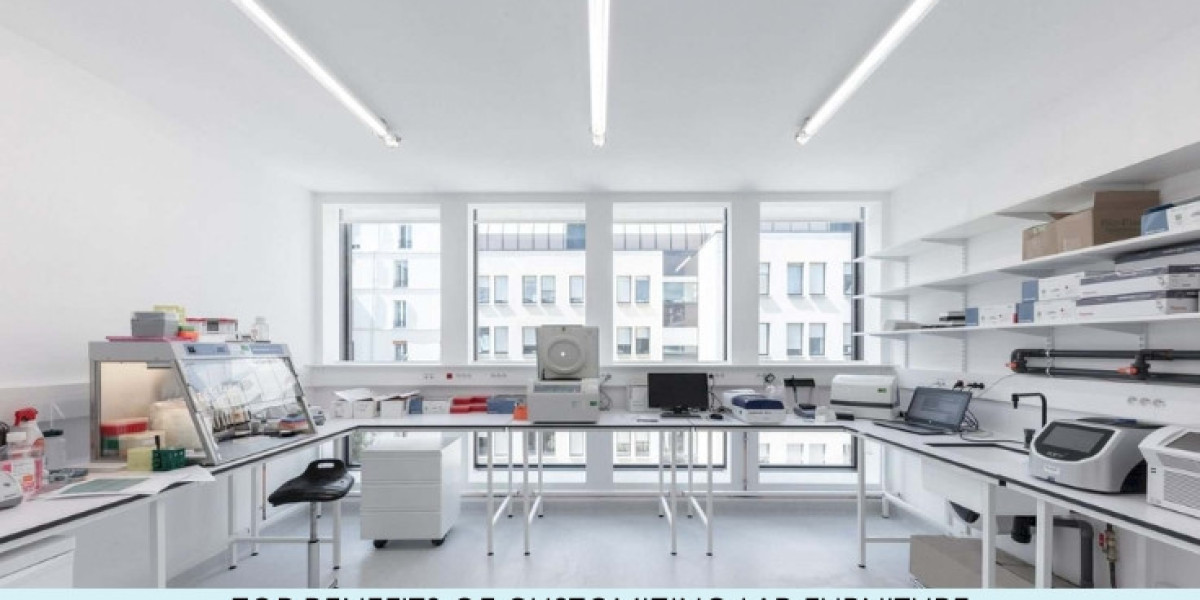In the dynamic world of research and development, laboratory spaces are constantly evolving to accommodate new technologies and methodologies. To create a productive and efficient lab environment, having the right lab furniture is crucial. While many laboratories may opt for pre-designed furniture, the advantages of customizing lab furniture are becoming increasingly clear.
Customizing lab furniture allows you to create a workspace that is specifically tailored to the needs of your team, ensuring better workflow, enhanced safety, and improved ergonomics. In this article, we will explore the top benefits of customizing lab furniture and why it’s a smart investment for modern laboratories.
1. Optimized Workflow and Space Utilization
One of the most significant advantages of customizing lab furniture is the ability to design a layout that optimizes your lab’s workflow. Every laboratory has different operational requirements based on the type of research conducted, the size of the team, and the equipment used. Pre-designed lab furniture often fails to meet the unique needs of every lab, resulting in inefficient workflows and wasted space.
With customized lab furniture, you can create workstations, storage solutions, and equipment areas that are strategically placed to enhance the flow of operations. Whether you need adjustable benches, movable workstations, or specialized cabinets for specific equipment, custom furniture ensures that every inch of your lab is used efficiently. This not only improves productivity but also enhances the overall organization and cleanliness of your lab.
2. Enhanced Ergonomics for Better Comfort and Safety
Lab workers often spend long hours at their workstations, which can lead to fatigue and discomfort if the furniture is not ergonomically designed. Standard lab furniture may not be suitable for all users, leading to poor posture, strain injuries, and decreased productivity. Customizing your lab furniture allows you to incorporate ergonomic designs that cater to the specific needs of your team.
Adjustable chairs, height-modifiable benches, and footrests are some of the ergonomic features that can be included in custom lab furniture. By providing a more comfortable working environment, you not only improve the well-being of your staff but also reduce the risk of work-related injuries. A safe and comfortable workforce is more efficient, leading to better research outcomes and higher employee satisfaction.
3. Tailored to Specific Research Needs
Different labs have different research needs, and one-size-fits-all furniture rarely meets the diverse requirements of scientific workspaces. Customizing your lab furniture ensures that the furniture is designed to support the specific activities and equipment used in your laboratory.
For instance, a biology lab may need specialized fume hoods, chemical-resistant countertops, and wet lab benches, while a physics lab may require vibration-resistant tables and heavy-duty workbenches.
Custom furniture can also include specialized storage solutions for sensitive equipment, hazardous materials, or delicate samples. By tailoring the furniture to your lab’s unique needs, you ensure that your team has access to the right tools and workspaces for their specific tasks, ultimately improving research efficiency and accuracy.
4. Improved Safety Standards
Safety is paramount in any laboratory environment. Customizing lab furniture allows you to design your lab with safety in mind. For example, you can integrate safety features such as built-in ventilation systems, fire-resistant materials, and spill containment areas. In addition, custom furniture can be designed to accommodate safety equipment like emergency eyewash stations, first aid kits, and fire extinguishers.
By considering the specific safety requirements of your lab, you can minimize the risk of accidents and create a safer working environment for your team. Properly designed custom lab furniture can help your lab meet industry safety standards and regulations, giving you peace of mind that your lab is both functional and compliant.
5. Flexibility for Future Growth
Laboratory needs often change as research evolves, technologies advance, and teams grow. Customizable lab furniture offers the flexibility to adapt to these changes without requiring a complete overhaul of your lab’s infrastructure.
Modular furniture systems, for example, allow you to reconfigure your lab space as needed, making it easy to add new workstations, storage areas, or equipment zones as your lab expands.
Investing in customizable furniture also ensures that your lab remains future-proof. As new technologies and methodologies emerge, your furniture can be easily modified or upgraded to accommodate these advancements, saving you time and money in the long run.
6. Aesthetic Appeal and Brand Identity
In addition to functionality, the appearance of your lab is also important, especially if you frequently host clients, investors, or industry partners. Customizing your lab furniture allows you to create a visually appealing workspace that reflects your lab’s brand identity. From choosing specific colors and finishes to incorporating your lab’s logo, custom furniture gives your lab a professional and cohesive look.
A well-designed lab not only creates a positive impression on visitors but also boosts employee morale. Working in a clean, organized, and aesthetically pleasing environment can lead to increased job satisfaction and a more motivated workforce.
7. Cost-Effectiveness and Long-Term Investment
While custom lab furniture may seem like a more expensive option upfront, it can be more cost-effective in the long run. Pre-designed furniture may not meet all of your lab’s needs, leading to frequent replacements or modifications that can add up over time. Custom furniture is built to your exact specifications, ensuring that it is durable, functional, and tailored to your research needs.
By investing in high-quality custom furniture, you also reduce the risk of workplace accidents, equipment damage, and inefficiencies, which can save you money on repairs and downtime.
Additionally, the flexibility of custom furniture allows you to adapt to future changes without needing to replace your entire lab setup, making it a smart long-term investment.
Conclusion
Customizing lab furniture offers a wide range of benefits, from optimizing workflow and improving ergonomics to enhancing safety and flexibility. By tailoring your lab’s furniture to your specific needs, you create a workspace that is not only functional and efficient but also comfortable and aesthetically pleasing.
Whether you’re designing a new lab or upgrading an existing one, custom lab furniture is a smart investment that will improve the productivity, safety, and longevity of your laboratory.







